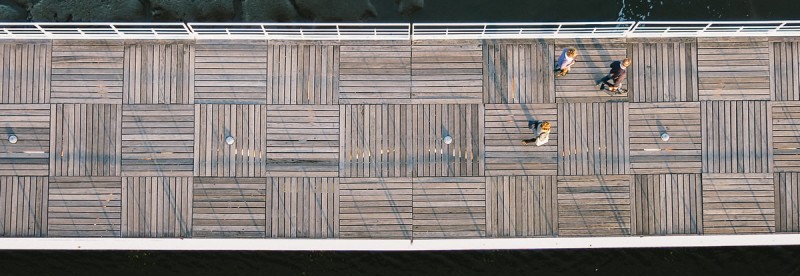What’s your job?
It should be easy to answer this question, right? Instead...

Recently I went to a meetup and while networking and chatting with a bunch of people, one of them made me the classic question, that each one of us has been asked a thousand of times:
“Ah, you work in Plentific. What’s your job?”
At first I stammered something about being a front-end developer with both competencies of design and user-experience, as I usually do. But in that moment I realised I could not reply anymore in this way. I was no longer sure of what exactly my job was. I mean, my current job title is “front-end engineer”, I work mostly with CSS/Sass and HTML, I get my hands dirty with client-side (often) and server-side (sometimes) code, I deal with colours, fonts, layouts and visuals all day long, so I know what I do (and what to do). But as time goes by part of my job is becoming less visible, less measurable, less “tangible”.
In the following days I started to think a lot about this episode. And try to find some sort of definition of my current job. What should I write under my “professional headline” on LinkedIn? What should I reply to someone asking me what do I do at work?
It’s always been a problem to find a simple but exhaustive definition of my profession. A definition that can cover the range of skills required day by day on my work. I mean, it’s not only me: a lot of people is having the same “problem”, and that’s where the definition of “unicorns” comes from. Sometimes it’s a kind of spell: it’s hard to find the right place where to work, it’s hard to explain what is the value that you can deliver, it’s hard to explain that you are not a “jack of all, master of none”. Luckily, more and more people start to understand the value of a full-stack employee. But still, the lack of a definition, of a clear answer to the question “what’s your job?” was spinning in my head.
Until one morning, while walking my way to work, suddenly a clear idea popped up in my mind: I build bridges. Bridges between the management, the designers and the developers (in some way, the business, the users and the technology).
I am like in the middle of these three worlds, and I try to make them communicate as much as possible. I try to lower the barriers, fix the misunderstandings, translate one requirement from one “language” to an other. It’s definitely not simple, sometimes the gap is too wide, sometimes someone simply doesn’t want to cross that bridge, and in some cases you end up with a wall instead of a bridge. But I like it, it’s my job, and that’s what I try to do every day.
Probably I will not be able to update my LinkedIn profile – what should I write? “product designer”? “full-stack unicorn devigner”? “bridge builder”? – but at least now it will be easier for me trying to explain to someone else “what my job is” :)
Update #1: Marco Cedaro (@cedmax) suggested this video, the keynote at From the Front last year. It’s the perfect complement to what written above:
Update #2: as highlighted by @Folletto, a (new?) role as “Product Managing Designer” (or even better “Product Design Manager”) is making its appearance.
Update #3: almost the same words: “We’re the bridge between visual designers, back end developers, and other disciplines” in this post.